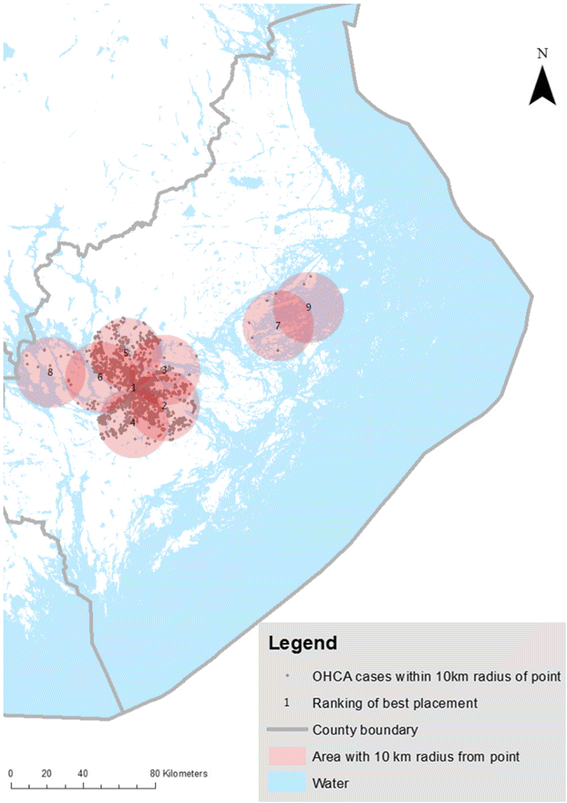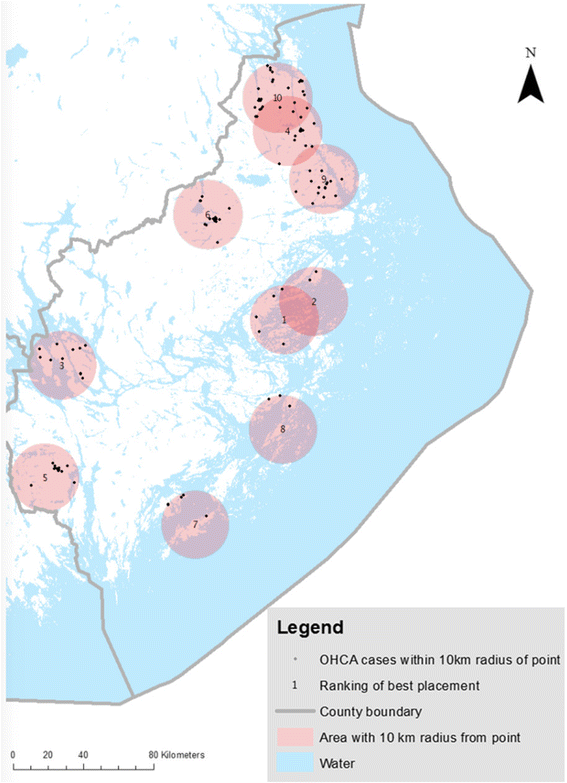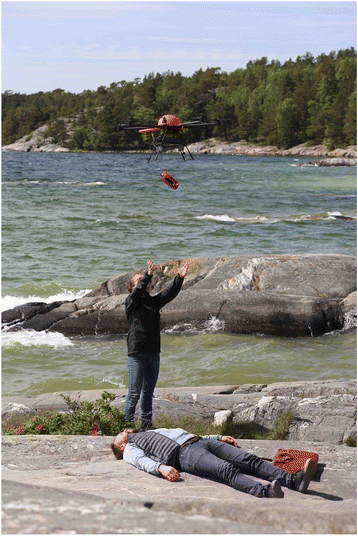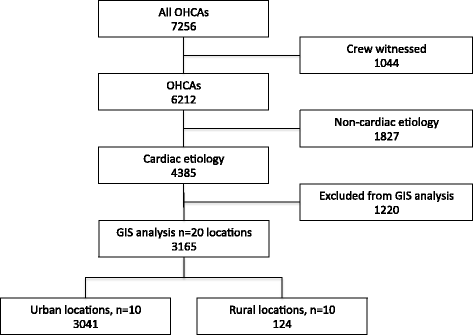Unmanned aerial vehicles (drones) in out-of-hospital-cardiac-arrest
- PMID: 27729058
- PMCID: PMC5059909
- DOI: 10.1186/s13049-016-0313-5
Unmanned aerial vehicles (drones) in out-of-hospital-cardiac-arrest
Abstract
Background: The use of an automated external defibrillator (AED) prior to EMS arrival can increase 30-day survival in out-of-hospital cardiac arrest (OHCA) significantly. Drones or unmanned aerial vehicles (UAV) can fly with high velocity and potentially transport devices such as AEDs to the site of OHCAs. The aim of this explorative study was to investigate the feasibility of a drone system in decreasing response time and delivering an AED.
Methods: Data of Global Positioning System (GPS) coordinates from historical OHCA in Stockholm County was used in a model using a Geographic Information System (GIS) to find suitable placements and visualize response times for the use of an AED equipped drone. Two different geographical models, urban and rural, were calculated using a multi-criteria evaluation (MCE) model. Test-flights with an AED were performed on these locations in rural areas.
Results: In total, based on 3,165 retrospective OHCAs in Stockholm County between 2006-2013, twenty locations were identified for the potential placement of a drone. In a GIS-simulated model of urban OHCA, the drone arrived before EMS in 32 % of cases, and the mean amount of time saved was 1.5 min. In rural OHCA the drone arrived before EMS in 93 % of cases with a mean amount of time saved of 19 min. In these rural locations during (n = 13) test flights, latch-release of the AED from low altitude (3-4 m) or landing the drone on flat ground were the safest ways to deliver an AED to the bystander and were superior to parachute release.
Discussion: The difference in response time for EMS between urban and rural areas is substantial, as is the possible amount of time saved using this UAV-system. However, yet another technical device needs to fit into the chain of survival. We know nothing of how productive or even counterproductive this system might be in clinical reality.
Conclusions: To use drones in rural areas to deliver an AED in OHCA may be safe and feasible. Suitable placement of drone systems can be designed by using GIS models. The use of an AED equipped drone may have the potential to reduce time to defibrillation in OHCA.
Keywords: AED; Cardiac arrest; Defibrillation; Drone; EMS; UAV.
Figures





References
-
- Herlitz J. Swedish register for cardiopulmonary resuscitation, annual report 2015. http://www.hlr.nu/hjart-lungraddningsregistret/. Accessed on 20 July 2016.
Publication types
MeSH terms
LinkOut - more resources
Full Text Sources
Other Literature Sources
Medical

